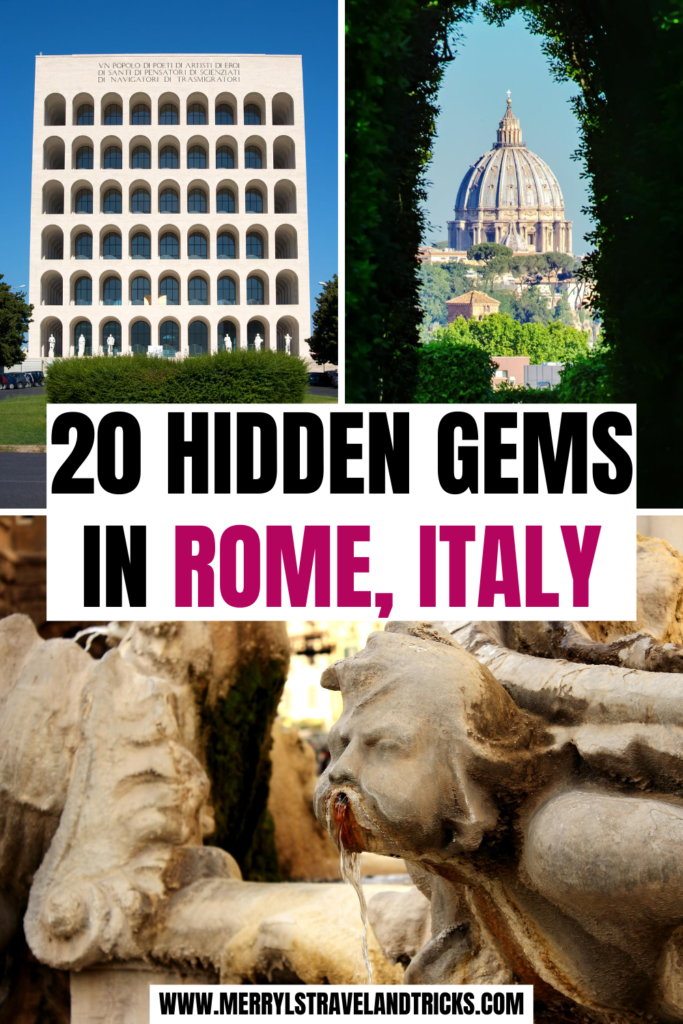Rome Off-The-Beaten Path: 20 Best Hidden Gems
Planning your trip to Rome last minute?
Make sure to book your hotels and tours in Rome in advance, especially if you're visiting during the peak summer months as they tend to sell out.
Top Tours and Tickets to Book Before You Go:
Best Hotels in Rome:
- 3. Hotel Navona
Rome was definitely not built in a day. The beautiful eternal city boasts of 2000 years of rich history, and the city is filled with innumerable hidden gems waiting to be discovered. Rome has a lot more to offer than the most popular tourist spots like the Colosseum and the Vatican. Most corners of the city are etched with secrets spots waiting to be discovered. These hidden gems in Rome give travelers the opportunity to escape the crowds and experience the real Rome. If this screams you, then you should definitely explore more of what Rome has to offer. Here is a list of places to visit to get an essence of the real Rome off-the-beaten path.
Please Note: Every place that I mention in the post below links to the google map location. So all you need to do is click it and save it. That way you will have all the important places marked for when you actually visit the city. Hope you find it useful
The Appian Way
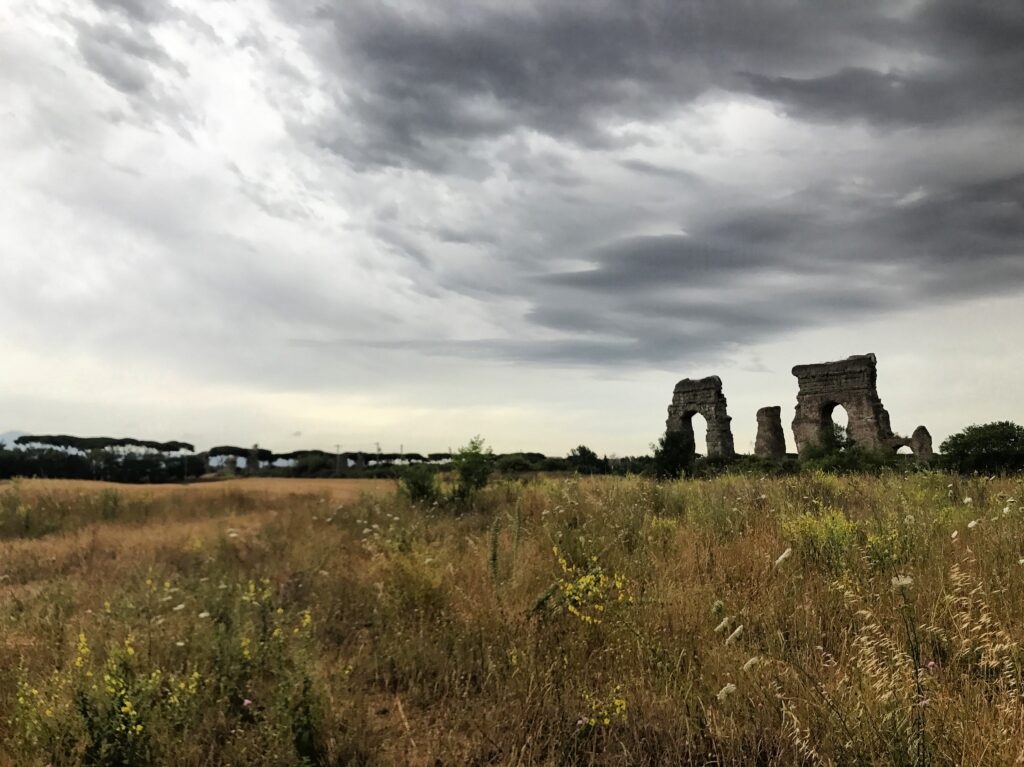
The Appian Way is one of the oldest surviving roads in Rome. The road was built during the infancy of the city itself. The long cobblestone path was mainly used for transportation in ancient Roman times. Some sections of the road to date have the authentic Roman cobblestone. This was one of the most important roads used by the military to transport the troops of ancient Rome. The history of the road gave birth to a saying “All roads lead to Rome.”
The best time to visit is on a Sunday when the road is closed to traffic.This allows you to explore the scenic beauty of the road itself and its surroundings. The Appian Way is one of the most well-preserved attractions that will take you back in time. A major part of the road lies outside the city. Alongside the Appian Way, you will find natural vistas and cafes to help you refuel on your journey.
The road’s starting point is marked with an information centre where you can rent bikes and hire a tour guide who leads you on the path. Various other monuments that can be found along this road include Porta San Sebastiano, Domine Quo Vadis Church and two major Christian catacombs- the burial site for many of the early Popes.
The Romans often come here on Sundays for picnics and bike rides to get away from the hustle and bustle of the city and enjoy the serenity of via Appia Antica.
Street Art in Ostiense
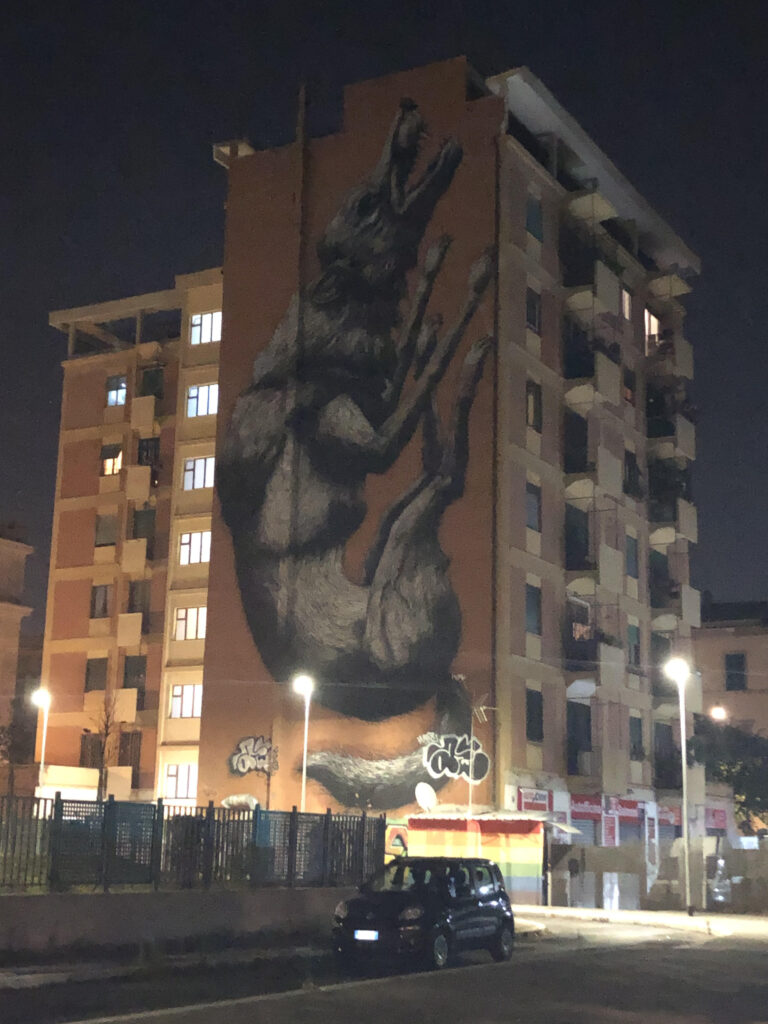
Ostiense is a residential neighborhood that is rich in modern street art. This quartiere of Rome is close to the Colosseum. Some of the works in this neighborhood are commissioned by the city of Rome.
The neighborhood has been a canvas for Roman artists as well as artists from around the world. It is an extraordinary mix of old and the new in terms of large-scale street art and the presence of a basilica. One of the central attractions of street art is the mural which covers a whole building by international artist Blue.
This neighborhood is also popular among the youth as it is a well-known nightlife spot in the eternal city.
Skull Of St. Valentine
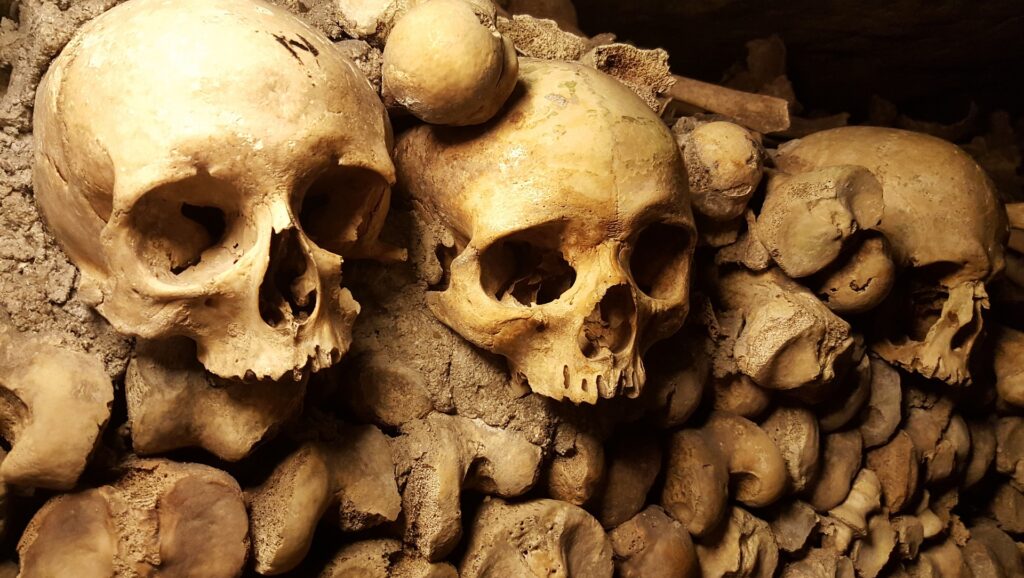
The Skull of St. Valentine is placed inside the 8th century church of Santa Maria in Cosmedin. Saint Valentine was a 3rd century Roman martyr who is commonly known as the patron saint of couples.
The skull is crowned with flowers and is placed on a beautiful gold-rimmed small glass reliquary. People around the world visit this place to embrace the sense of romance from the patron saint Valentine.
Additionally, the church of Santa Maria in Cosmedin too is exceptionally beautiful. It has an intricate and colourful marble floor which is worth seeing. This is one of the most unusual places to experience love in the eternal city.
Pyramid of Cestius
The pyramid of Caius Cestius was built in 12 BC as his burial tomb. This was exactly like the Egyptian pyramids, and therefore it structurally stands out among the city’s Roman architecture. One can get the best view of the pyramid from the non-Catholic cemetery.
You can visit the inside of the pyramid only on weekends. However, the tours inside are only in Italian, so you may want to take a translator along.
Non-Catholic Cemetery
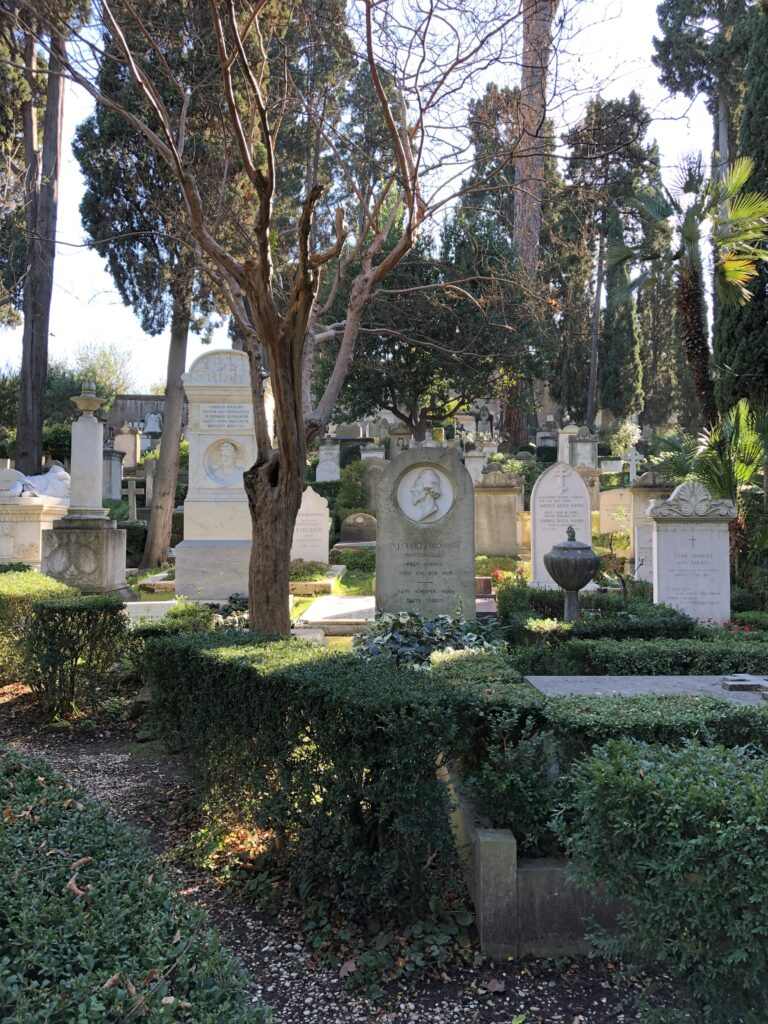

The non-Catholic cemetery was built for the burial of non-Catholic people separately. This was because the Roman Catholics were extremely strict about letting non-Catholics being buried in the city. This cemetery is the resting place of famous people like poets John Keats and P.B.Shelley, Antonio Gramsci and other notable people.
During your visit to the cemetery, pay attention to the beautiful tombs while strolling around. Some of them have been beautifully structured, leaving visitors awestruck.
Catacombs Of Rome



The catacombs of Rome are basically underground burial tunnels that were created in the second century. They were built because the Romans were facing a shortage of land for burial. These catacombs are full of Roman history as they contain the tombs of various Popes. The tunnels also have a few well-preserved frescoes and sculptures that are worth seeing.
The unusual nature of the catacombs makes it all the more interesting to visit. It depicts a relationship between the dead and the alive. The catacombs can be a place to experience the eerie without putting yourself in any danger.
If you wish to visit the darker side of this eternal romantic city, you should definitely pay a visit to the catacombs. However, you can only visit them as a part of guided tours because of the sensitive nature of the surroundings.
Baths Of Caracalla
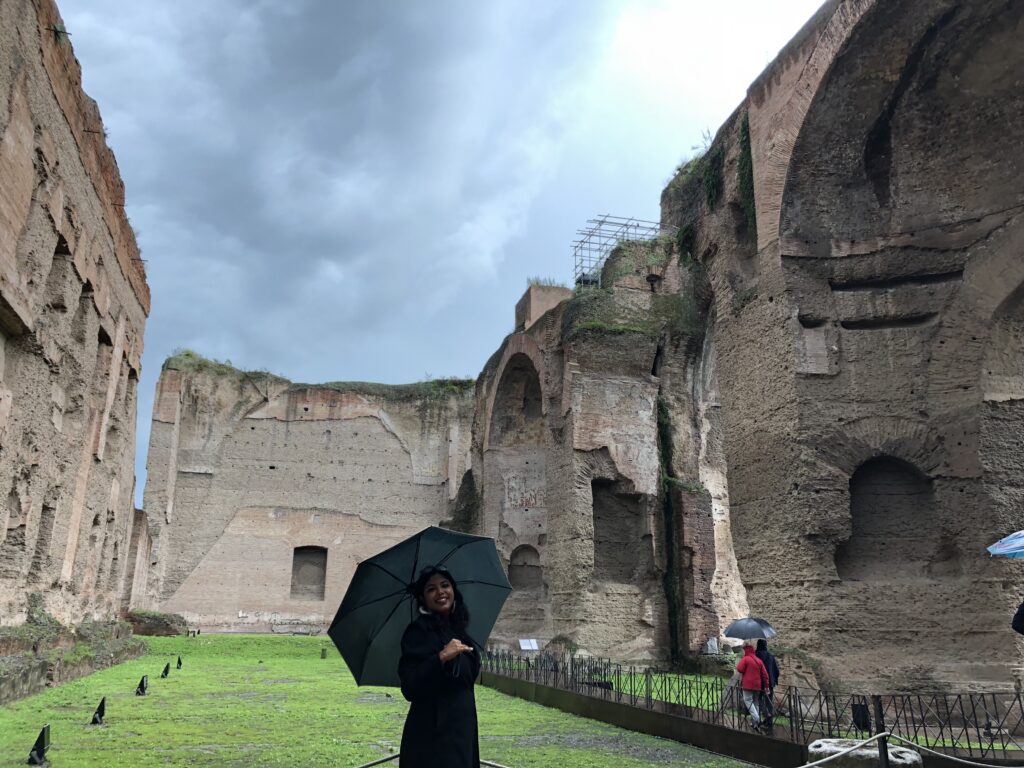

Luxurious public baths were a common feature in early civilization. Among the Roman baths, these Baths of Caracalla were the second largest public bath in Ancient Rome. It was inaugurated in 216 AD by Emperor Caracalla.
With it’s lavish features, the Baths of Caracalla became the most spectacular thermal complex in ancient times. The complex had various amenities like hot and cold baths, gym, library, cafes and an Olympic size swimming pool. The gardens are beautifully maintained adding to the charm of the complex.
The Baths of Caracalla are free to visit every first Sunday of the month from October to March. There are also virtual reality tours offered, but these are better booked in advance. These ruins are one of the best places to avoid the crowds in Rome.
Booking.comDomus Aurea
The Golden House or the Domus Aurea is considered to be the most extravagant constructions in the history of Rome. After the great fire of 64 AD, Emperor Nero commissioned the villa complex better known as his personal palace. It was later converted into a public bath by Emperor Trajan.
This place was opened to the public recently, and the restoration of the monument by the Archaeological Department is still in process. This place will give a wide sense of adventure as visitors are made to wear hard hats because of the condition of the building.
The building contains a large octagonal room with an oculus in the ceiling, that existed even before the Pantheon. It was earlier used as a private art gallery and was home to some beautiful frescoed walls and mosaics that are now covered in dirt.
The tours only take place on weekend with a limited number of people hence booking in advance is required. The use of Virtual Reality video(s) makes it convenient for the tourists to witness what this place used to look like in its original state.
Teatro Marcello
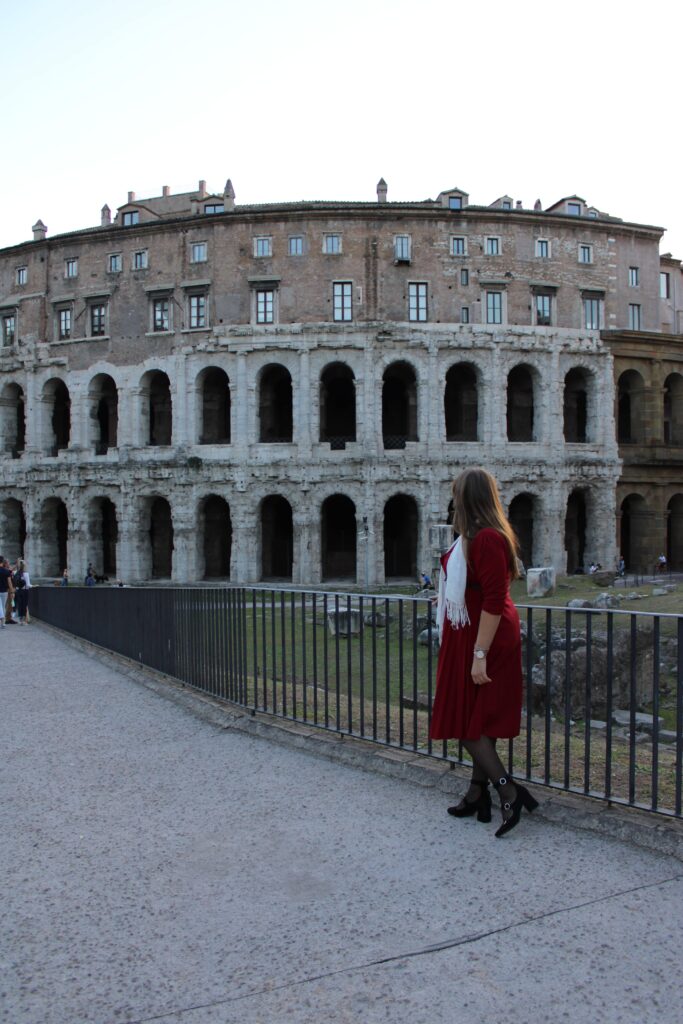

Marcello Theater is another Roman amphitheater that was built in 12 BC. The outer facade of the monument looks like the Colosseum. Later in the 16th century, a palazzo was built on top of the structure. These apartments are now privately owned residences. Due to this being a residential area, it is not allowed to go inside the monument anymore. However, you can always walk through the blocks and columns around it and admire the beautiful exterior.
This building is a perfect example of how Rome as a city continues to grow and exist along with its history that remains in ruins with new life growing around it. It also represents how the city carries layers of history, one on top of the other.
Portico Di Octavia
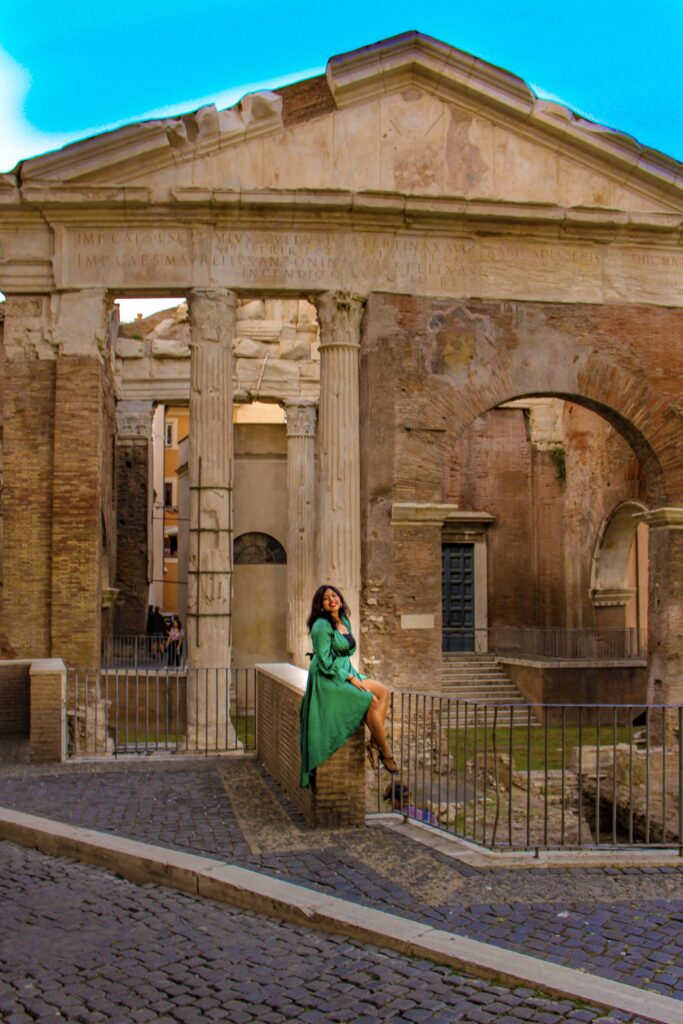

Portico Di Octavia was built in Ancient Rome and is the site of two temples and a library. Later a fish market was established on the ruins in the middle ages until the 19th century. This monument has symbolic importance for the city of Rome, and you might simply come across this place while exploring other major attractions of the city.
Gianicolo Terrace


In a city like Rome, there comes the point when you just want to sit back, relax and enjoy the view. If you’re looking for something like this Gianicolo Terrace is the spot for you.
The place offers a spectacular view of the sunset from the top of the hill. It also gives a view of the city, including a few major attractions.
This place is often visited by locals to hang out and therefore gives a different experience as compared to the regular tourist attractions. It is just a short walk away from the famous Trastevere.
Keyhole
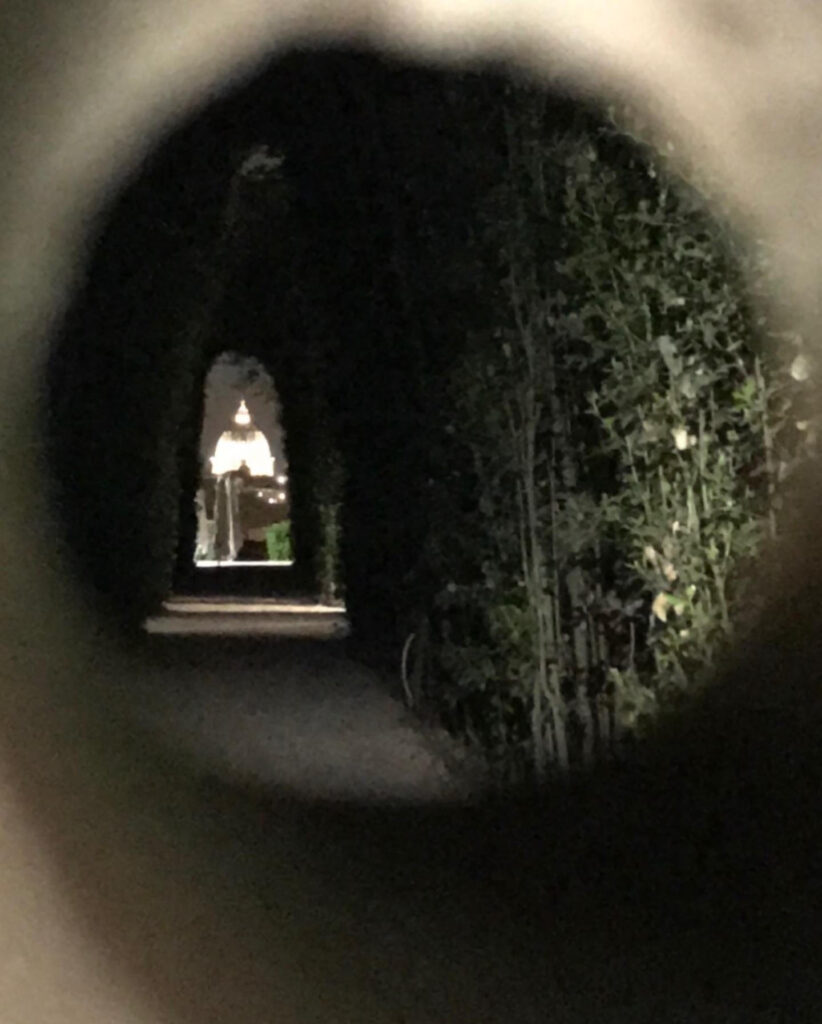

Visiting a Keyhole as a tourist attraction sounds a bit odd, but you will be surprised to witness that it does literal justice to its name and gives a perfect view of St. Peter’s Basilica via a keyhole in the door of Knights of Malta property.
This is one of the hidden attractions off-the-beaten path in Rome. For the view, you have to look into the keyhole with a view of a shrubbery tunnel to witness the beauty of St. Peter’s Basilica. The whole view altogether makes it even more interesting. It is located on top of the Aventine Hill.
Orange Garden
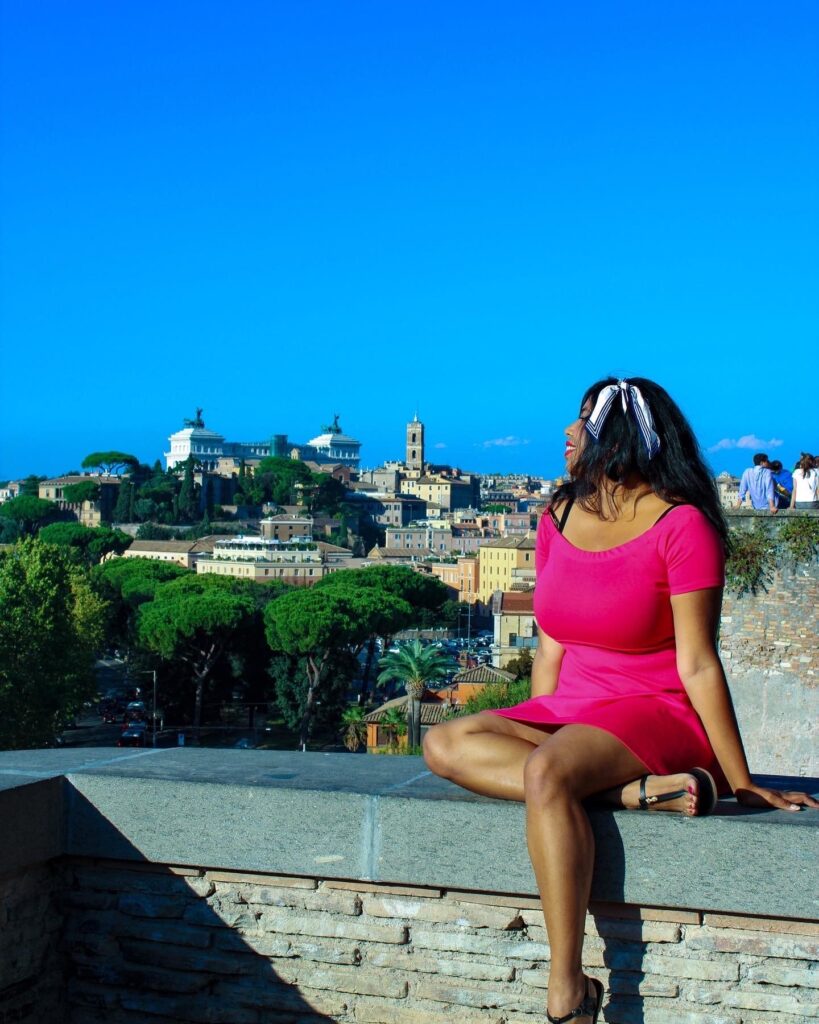

The Orange Garden of Rome is one of the best natural areas around the city. Located on top of the Aventine Hill, this beautiful garden is filled with orange trees. Head here to enjoy the calmness and peace along with one of the best views of the eternal city.
The real name of this garden is Savello Garden. However, locals today won’t recognize it by this name. They know it as the Orange Garden because of the abundance of bitter oranges on the land.
Rose Gardens
This place is a little less known in comparison to other spots in the city and is truly a hidden gem in Rome. Visitors can enjoy the beauty of full-bloomed roses as this garden houses over 1000 varieties of Roses.
The Rose Garden is open free of charge from late April to mid-June and sometimes for a couple of weeks in October.
Quartiere Coppede
The eternal city of Rome is home to various ancient monuments that are well known for its architecture. Modern-day Rome has a lot to offer as well, one such example is the modern residential neighbourhood, Quartiere Coppede. It should definitely be a stop on your tour of the best montuments off-the-beaten path in Rome
This place is known for its flamboyant architecture which may feel like a fantasy world once you enter. The entrance of the neighbourhood itself is marked by an outdoor chandelier that gives it the perfect introduction. This neighbourhood may not have any historical significance, but is fascinating enough to be on your list of places to visit off the beaten path in Rome.
The Art Nouveau Buildings are carved with intricate details that include elements of Greek, Baroque, Medieval and Gothic designs. Piazza Mincio, the centre of the neighbourhood is enhanced by a fancy frog fountain.
Square Colosseum (EUR)
The Square Colosseum was built as an architectural replica of the Colosseum after 2000 years. It was planned by Mussolini to celebrate 20 years of Fascism in 1943. The area was chosen around the 1930s for the World Fair which unfortunately could not take place because of World War II. The construction was finally completed in the 1950s, and it became a business district.
This building may not appear on the list of major attractions in the eternal city but is a great example of modern architecture. It is now used as both residential and business area with a little lake and Fascist architecture.
Galleria Sciarra
In the late 19th century the wealthy Sciarra family built a beautiful structure as a shopping mall which was instead used as the headquarters of their magazine. The building today has different offices and is open for the public to visit during the business hours. The people inside the building get quite a view across their windows.
The building is covered by a vaulted glass ceiling along with Art Nouveau Frescoes painted by Giuseppe Cellini. The theme of the building is celebrating women in different fashions and various female virtues. It is a short walk from the Trevi Fountain and is an aesthetically pleasing sight amid the other famous attractions.
Church of St. Peter in Chains
San Pietro in Vincoli is a minor basilica in Rome. The Apostle Peter was arrested and jailed in Jerusalem for preaching about Jesus. He was shackled with iron chains. The night before the trial, he was miraculously freed by an angel and was led out of prison right under the noses of the guards.
The chains in which Peter was shackled, miraculously fused together when they were brought back to the jail. This basilica houses those fused chains even today, and they are a significant symbol of holiness. It gives you a sense of spirituality and the miracles it can perform. This place is better known for the statue of Moses by Michelangelo.
Remains of the Crib of Jesus
The relics of Baby Jesus in a crib are protected and displayed in a crystal reliquary below the main altar in Basilica of Basilica Papale di Santa Maria Maggiore in Rome. It is supported by four beautiful golden angels at the bottom.
This statue of baby Jesus resting on a cushion laid on a bed of hay may give you a sense of holy satisfaction. It is one of the hidden secrets you can find in Rome off-the-beaten path.
Remains of the Table of the Last Supper
The Basilica of St. John Lateran contains the wood from the table used at the Last Supper. The piece is placed above the altar of the Lateran Basilica and is another religious relic you can find in Rome off-the-beaten path. This is a rare sight, and the basilica along with this wood also houses various splendid artworks and the tomb of Pope Leo XIII.
Traveling in Rome
The eternal city of Rome has a limited metro system which does not connect the whole city; however, it is enough to visit the major tourist destinations. Other forms of public transport like buses and trams have a more expansive network in comparison and hence can be a more viable option to get to almost any corner of the city. Metros are open daily from 5:30 am to 11:30 pm from Sunday to Thursday and until 1:30 on Fridays and Saturdays. The bus services run through the day, only to be replaced by night buses post 12 am.
In terms of cabs, MyTaxi and Uber are the two options available. Uber is not that accessible and has limited service. MyTaxi is more preferable to get you around the city and is a comparatively cheaper option. It is also safer to keep a check on the route via Google maps as some cab drivers may take you for a long ride.
FAQS
Q: What are the best times of year to visit these off-the-beaten-path locations in Rome?
A: Visiting Rome's hidden gems is ideal during the shoulder seasons, typically April to June and September to October, when the weather is pleasant, and the tourist crowds are smaller.
Q: Are there specific cultural or local events associated with Rome's hidden gems?
A: While the article doesn't specify, many of Rome's lesser-known sites host local events or festivals throughout the year. It's recommended to check local event calendars or ask locals for any special occasions happening during your visit.
Q: How does one book tours for locations that require them, like the Catacombs of Rome, and what are the costs?
A: For guided tours of specific sites such as the Catacombs, you can usually book directly through the site's official website or through reputable tour companies. Costs vary depending on the tour's length and exclusivity.
Found this post helpful? Support the creator by sharing it on social media
